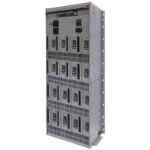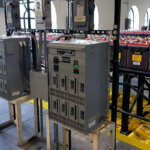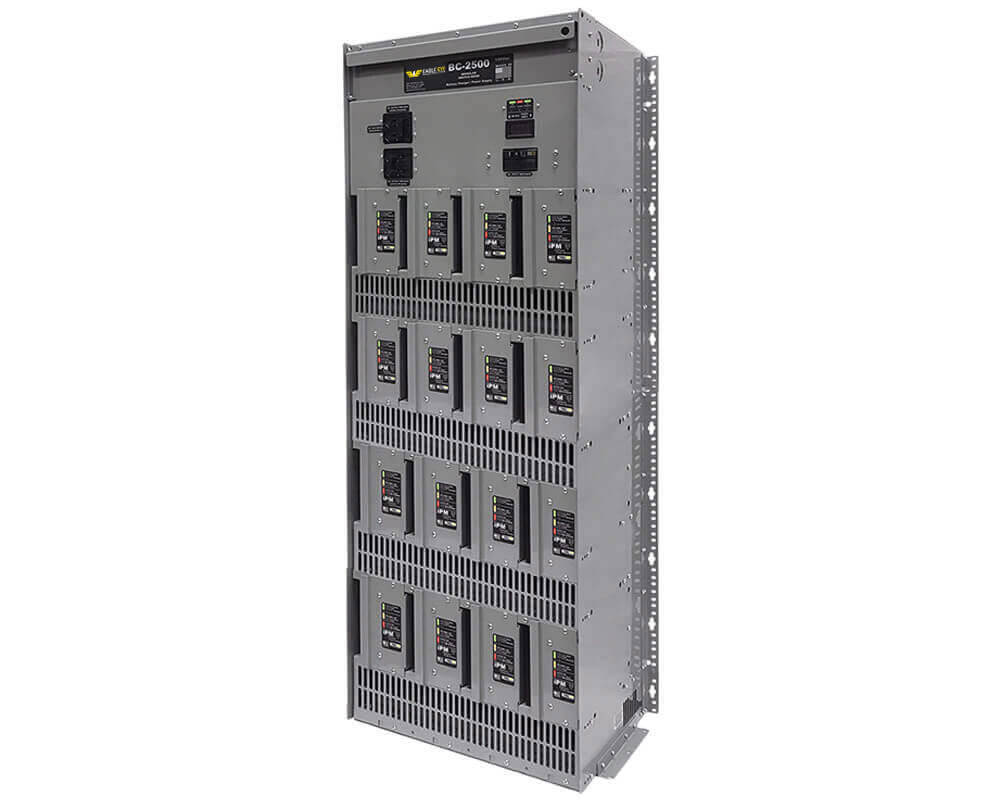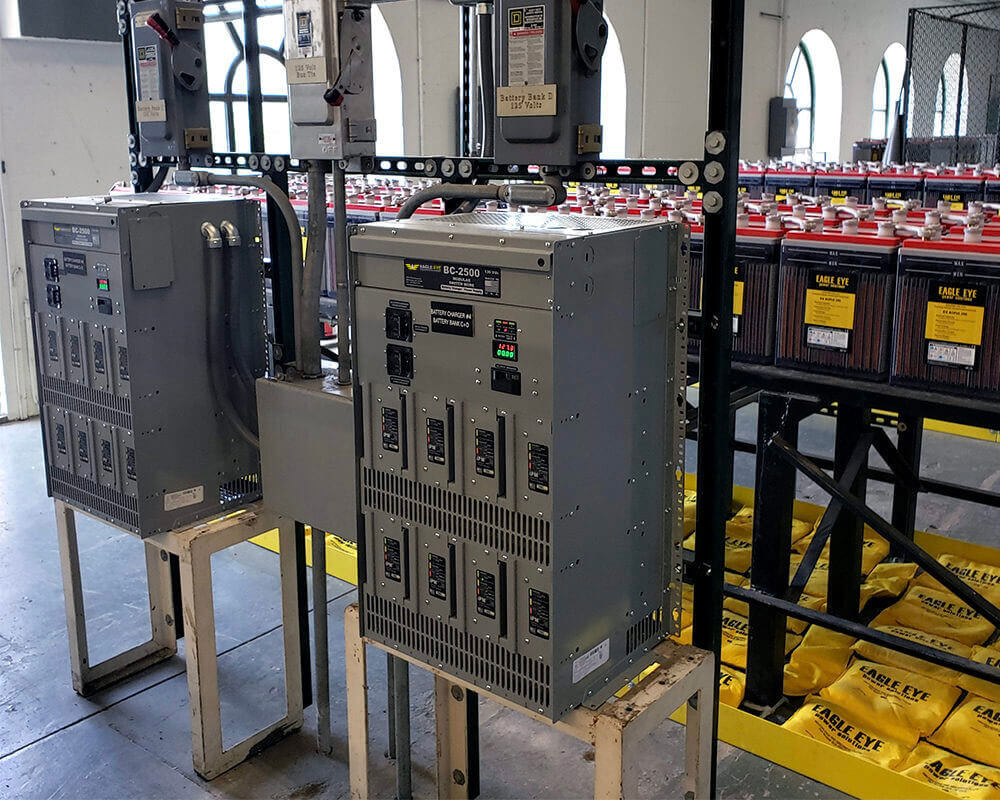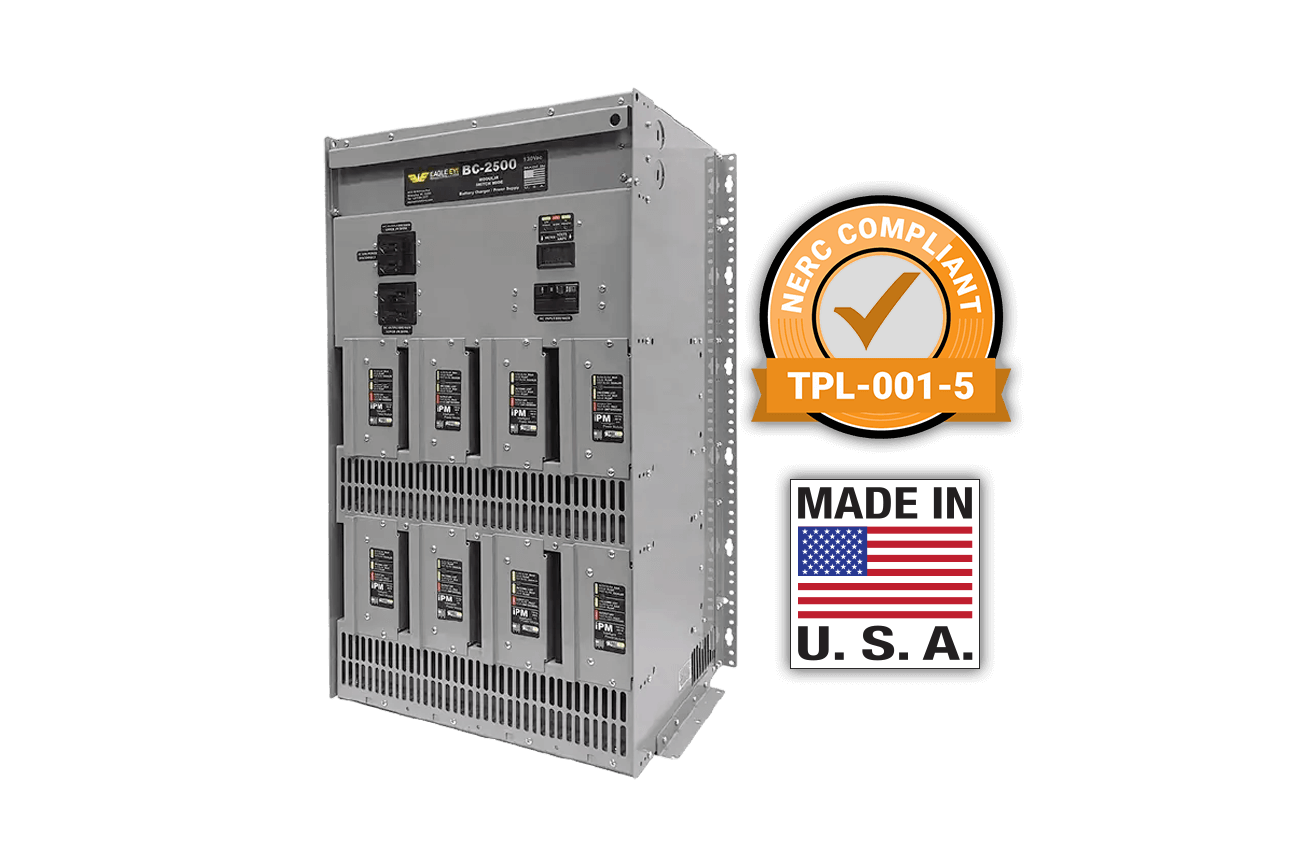FAQs
What are the mounting options for the charger?
The BC-2500 Charger can be mounted to the wall, on the floor, on a shelf, or on an EIA 19-inch or 23-inch rack (front or rear).
What kind of batteries are compatible to charge with the BC-2500?
The BC-2500 can charge batteries of a wide variety of types. These include Vented Lead-Acid (VLA), Valve Regulated Lead-Acid (VRLA), and Nickel- Cadmium (Ni-Cd).
What operating conditions should the charger be kept in?
The operating temperature range of the unit is -40 – 158oF (-40 – 70oC), and the operating humidity range is 0-95% relative humidity.
What method of cooling does the charger employ?
The BC-2500 was designed to stay cool by venting air using natural convection, which avoids potential electrical and safety issues which often arise when fans are used.
What is the total weight of the charger per model?
4-slot chassis: 65 lbs. (41 lbs. unloaded) 8-slot chassis: 125 lbs. (77 lbs. unloaded) 16-slot chassis: 296 lbs. (200 lbs. unloaded)
How does the built-in ground fault detection (GFD) work on the BC-2500?
The ground fault detection system is based on constant current from the battery through the tap strip. It does not use the older way of having two resistors across positive and negative, which is based on voltage. This is because if you change voltage manually and your ground fault isn’t calibrated to that voltage you don’t get as an exact reading.
Secondary with the charger you can do a “mechanical” lock-out disabling the system, in case you have other GFD systems in place. No special tools or programming required to lock-out the GFD.
What does the included remote DC sensing cable do?
The BC-2500 senses what is coming out of the opposite end of the battery, and finely tunes its voltage output. The BC-2500 is highly filtered, this feature set only increases the accuracy and performance further.
How much does each iPM module weigh?
The weight of each iPM module is about 6.6 lbs.
Can an iPM be replaced (hot swapped) while the charger is on?
Yes, the charger never needs to be powered down to replace an iPM.
Why does redundancy matter and how does it work?
The redundancy and modular design allows the BC-2500 to experience various events that might otherwise reduce or cut output like in a typical SCR battery charger. The iPMs work independently to source the load and balance output on a continuous basis. If one of more iPMs are damaged others in the chassis will continue to source the load to keep the station operating as needed until technicians arrive to give aid.
Which components of the BC-2500 are microprocessor based?
All iPMs have microprocessors that interpret instructions from the UIM and then maintain those instructions as to how to care for the batteries. The UIM also has its own microprocessor for receiving and communicating instructions, as well as alarms. Since they all have their own processors that is what allows multiple failures in one chassis (including the UIM) and the charger will continue to provide DC voltage and current.
Is it possible to load share between multiple chargers?
The BC-2500 chargers will load share independently, no need for any special cables or added options. As one charger reaches capacity, another will ramp up quickly to support the incoming load. The BC-2500 chargers are highly filtered to operate as a DC power supply too, so they react extremely fast to load changes to support the load.
What type of NEMA rating does the charger meet?
The BC-2500 chargers carry a NEMA Type 1 design. Additional certifications that are based on NEMA are found in IEEE which the BC-2500 complies with. The BC-2500 is also tested and certified by UL/cUL.
What is the rating of the contacts on the BC-2500’s alarm relay terminal?
The standard alarm relay contacts are rated for 1A at 30VDC or 0.5A at 120VAC. For the optional Alarm Relay System add-on which has additional relay contacts, these are instead rated for 2A at 150VDC or 120VAC.
For the optional Alarm Relay System, how are the relay contacts wired?
The Alarm Relays have 3 points per alarm, Normally Open, Normally Closed and Common. This depends on the relay that the charger is connected to and what the relay requires. A common installation error is the wires get flipped by accident. If they are, no damage will occur.
For the optional Alarm Relay System, do the contacts change state when
the system powers on/off?
It is critical that the user understands, if AC fails, the alarm board latches and continues functioning. The reason is if AC fails, you want those alarms to stay active and feedback to their SCADA/central operations as to what the state of the charger is currently. If AC returns, the alarms will expire if the values the charger is seeing are within the alarm trigger levels set on the webserver/dashboard. The alarms are self- clearing so if the event expires, the alarm goes away. In addition, every alarm is also recorded, and time/date stamped in the history records.
Where can the optional Alarm Relay System be mounted?
The remote alarm relay box can be mounted on a wall or near the charger if the cable will reach. Avoid mounting it to the side of chassis as a screw or bolt could contact the iPMs. The rack brackets offer a lot of places to anchor it to. It has been tested to work up to 100ft away from the charger.
What type of breakers are in the BC-2500?
The BC-2500 comes standard with 10KIAC thermal magnetic breakers on the AC and DC sides. Further, the BC-2500-130V units are equipped with hydraulic magnetic on the DC side. Optional 20KIAC high interrupt are available at an additional fee.
What kind of cyber security features does the BC-2500 have?
The BC-2500 utilizes a mechanical switch “Confirm Local Presence” button that only allows for changes when a technician is physically present at the charger. Additional protection comes in the way of IP addresses, passwords, and proprietary software not found for public purchase.
What is the maximum AC input current draw on the BC-2500?
Use the following equation to calculate the current draw per the AC voltage and the number of iPMs installed: Max AC input current = (480W x iPM Qty x 1.1) / AC voltage.
For example, a filled 8-bay BC-2500 powered at 240 VAC gives: Max AC input = (480 x 8 x 1.1) / 240 = 17.6 A
A filled 8-bay BC-2500 at 120 VAC gives: Max AC input = (480 x 8 x 1.1) / 120 = 35.2 A





